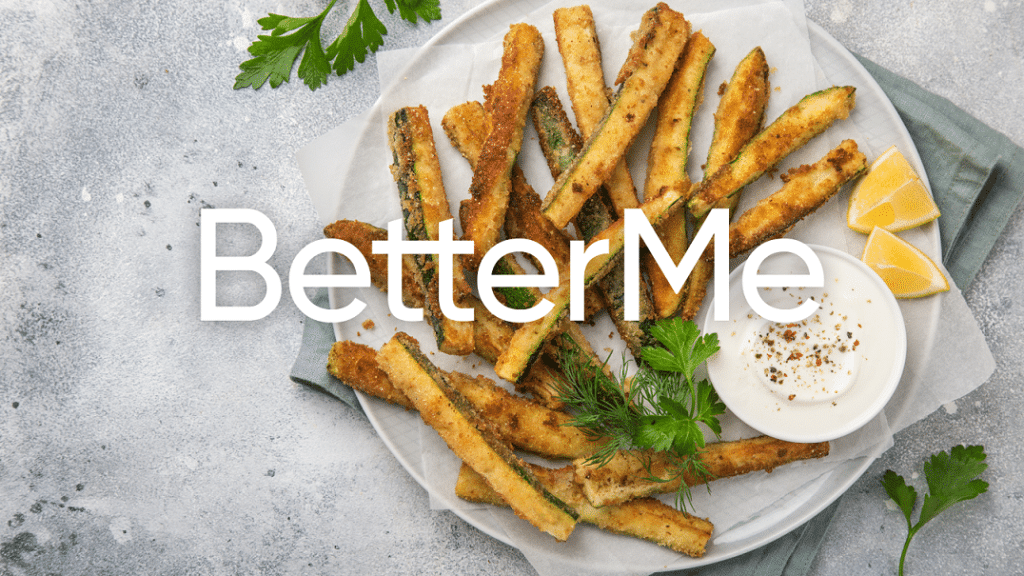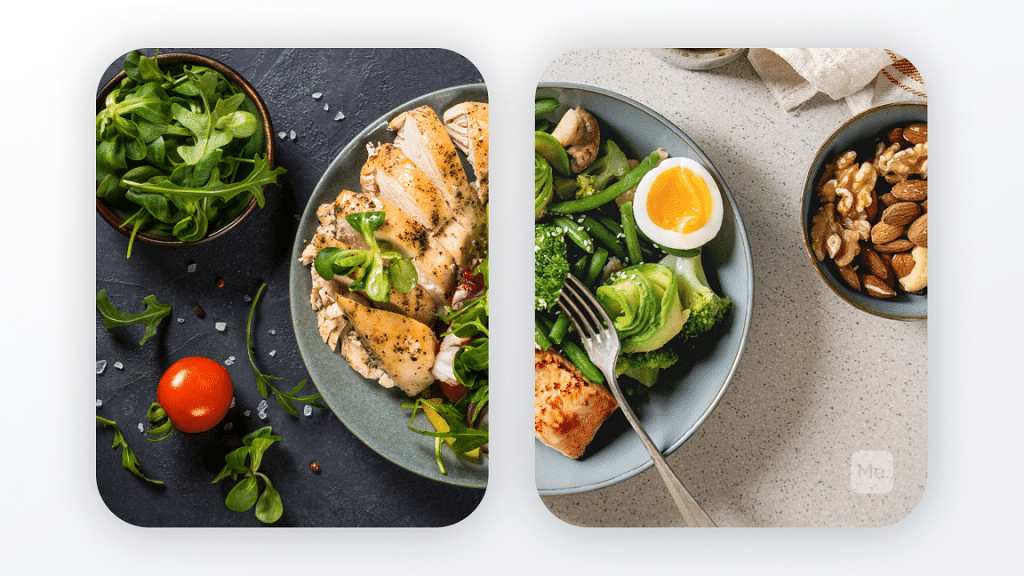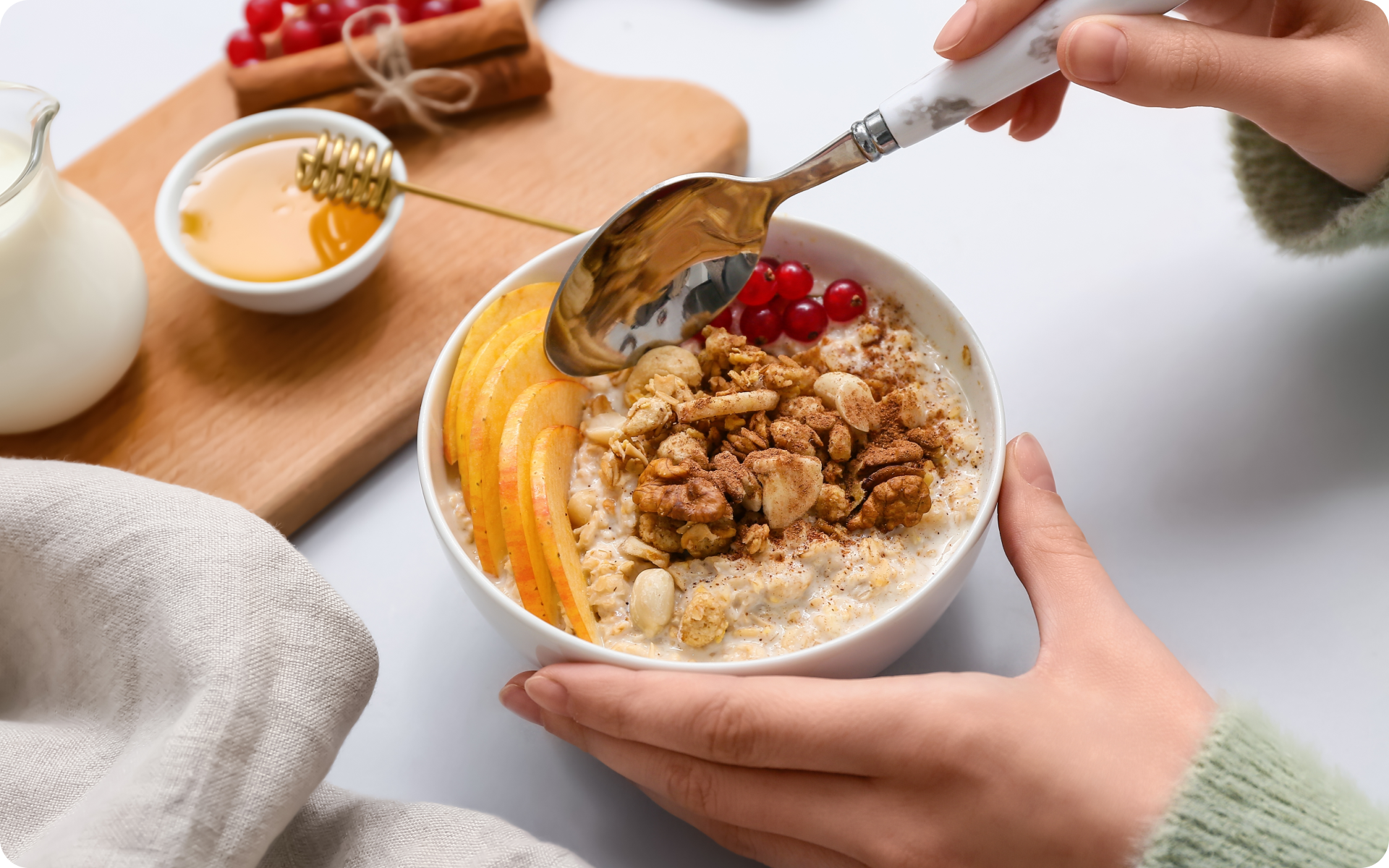The Autoimmune Protocol Diet (AIP Diet) is specifically designed to help people with an autoimmune or inflammatory bowel disease heal their bodies and get relief from the symptoms of inflammation and pain that they experience (5). The AIP diet follows a process called an elimination diet which works by eliminating potential trigger foods for a certain amount of time, in order to give the body a break. Foods are then reintroduced one by one to help determine which specific foods trigger reactions, which can vary by individual person. During the elimination period, the immune system has an opportunity to calm down and any tissue damage can begin to heal. The food plan during this time consists of non-inflammatory foods that are easy for your body to digest and won’t cause digestive discomfort like some people experience with IBD (Inflammatory Bowel Disease) or other autoimmune conditions.
Who Can Benefit From The Autoimmune Diet?
A healthy immune system is designed to attack foreign invaders, like bacteria and viruses. This assault is a critical part of staying healthy.
However, in people with autoimmune disorders, the immune system mistakes cells in the body for foreign invaders, and begins attacking healthy tissue like it would an infection (1).
The cause of autoimmune disease is still largely unknown, but contributing factors are thought to be genetics, environmental toxins (like cigarette smoke), infections (such as Epstein-Barr virus or human herpesvirus 6), stress, leaky gut, and other factors (1).
The immune system of someone with an autoimmune disease is already overactive, and certain foods are believed to act as irritants and trigger inflammation which just starts your immune system on another inflammatory rampage.
Some of the common autoimmune disorders that may benefit from AIP diet include (1):
- Rheumatoid arthritis – Rheumatoid arthritis is an autoimmune illness that causes pain and swelling in the joints, most often the knees.
- Lupus – an autoimmune disorder that can affect nearly every organ system in the body.
- Celiac disease or gluten intolerance – a digestive disorder where people experience severe reactions from eating gluten which is found in grains like wheat, barley and rye.
- Multiple sclerosis or MS – a disease that is thought to be autoimmune in nature where the myelin sheath around neurons begins to break down which results in problems with muscle control.
- Psoriasis – a condition where inflammation affects the skin which can lead to scaly, red patches.
People who are pregnant, lactating, underweight, or malnourished should not attempt this or any other highly restrictive diet. Anyone who goes on an elimination diet should work with a registered dietitian and be monitored by a physician, as restrictive diets can have negative health effects.
How Does The Autoimmune Protocol Diet Work?
There are two phases that will be covered here:
The Elimination Phase
Foods that are believed to cause inflammation or irritation of any kind are eliminated from the diet for a period of time so the body has a chance to heal (5).
During this time, foods like eggs, dairy, gluten, nuts, seeds, nightshade vegetables (like peppers and tomatoes), coffee and tea will be avoided. You may also have to avoid certain medications, supplements, and even cleaning products while in the elimination phase.
While at it, you’ll consume fresh, nutrient-dense foods that are rich in antioxidants and anti-inflammatory compounds. The length of the elimination phase can be anywhere from 30 – 90 days, depending on the individual and the severity of their condition. Your dietitian can help you make sure you are still getting the essential nutrients you need during this time.
Read More: 6 Food Elimination Diet: How To Do It Correctly And Identify Your Triggers
The Reintroduction Phase
Once you see a measurable improvement in your symptoms and well-being, you’ll move on to the reintroduction phase of the diet.
During this time, you will slowly add back in some of the foods that were eliminated during the elimination phase one at a time, every 4-7 days. If you notice that eating certain foods causes negative side effects then just don’t eat them or it’s best to avoid them altogether.
This process is very helpful for people with autoimmune disease because it helps them know exactly which foods they should avoid, and allows for some flexibility once the body has healed.
Here’s a step by step approach you can take during the reintroduction phase:
- Choose one food to reintroduce. Eat a small amount, such as 1 teaspoon and wait to see if you have a reaction. If you experience symptoms, end the test and avoid this food completely. If there is no reaction, move to step 2.
- Eat a slightly larger portion of the food, such as 1 tablespoon and monitor how you feel for 2-3 hours. If you experience symptoms, end the test and avoid this food completely. If no reaction, move to step 3.
- Eat a normal portion of the same food and avoid it for 5-6 days without reintroducing any other foods. If you experience no symptoms after 5-6 days, you can incorporate this food into your diet. After a few days, repeat this 3 step process with a new food.
Be sure to follow any other advice your dietitian or physician gives you during this phase as well.
Foods To Eat And Avoid During The Elimination Phase
The AIP diet is incredibly restrictive, so here are some examples of the types of foods you can eat and those you should avoid. Your dietitian may also give you more individualized guidance.
Foods To Avoid
While on the elimination diet, avoid these foods:
- Grains – rice, oats, wheat (and anything made with them like breads and pastas), rye, barley
- Legumes – all beans, peas and peanuts, and foods derived from them. Soy and soy products are also eliminated during this phase
- Nightshade vegetables – bell peppers (red and green), eggplants, tomatoes, and spices derived from them such as paprika
- Alcohol – wines, beer and liquor.
- Eggs – both yolk and whites, including products like mayonnaise
- Dairy – milk (from any animal), cheese, cream, yogurt
- Nuts – peanuts (actually a legume) and all other nuts like walnuts, Brazil nuts, pistachios
- Certain vegetable oils – soybean, canola, sunflower, safflower, grape seed oils
- Sugar – cane sugar (also called sucrose), beet sugar, barley malt syrup, brown rice syrup and high fructose corn syrup. Includes sweets and desserts that may contain these ingredients
- Food additives and artificial sweeteners – MSG (monosodium glutamate), carrageenan, maltodextrin, hydrolyzed vegetable protein, artificial sweeteners like aspartame and sucralose
- Dried fruit – raisins, cranberries, apricots, dates and other dried fruit
- Coffee – all types including decaf
- Yeast and Brewer’s yeast.
Betterme will keep you laser-focused on your weight loss journey! Nutrient-packed meal plans, fat-blasting workouts, galvanizing challenges and much more. Try using the app and see for yourself!
Foods To Eat
While on the elimination phase, you may eat these foods:
- Vegetables – all except nightshades and algae
- Fruits – all, but in moderation
- Minimally processed meats – beef, chicken, duck, pork, organ meats, seafood
- Fermented foods – sauerkraut, kimchi, coconut aminos
- Bone broths – beef, chicken, and fish
- Herbs and spices – parsley, rosemary, basil and ginger (fresh or powdered). Only those that aren’t derived from seeds.
- Minimally processed vegetable oils – extra virgin olive oil, coconut oil, flaxseed oil
- Certain teas – herbal teas, green tea
- Honey, maple syrup and unprocessed sugars – not to exceed 5% of your daily food intake.
Does The AIP Diet Work
Limited research has shown that the autoimmune protocol can improve symptoms for some people with certain autoimmune diseases. Some of the reported benefits of this diet include:
May Heal A Leaky Gut
The AIP diet eliminates foods that are believed to contribute to inflammation and may promote intestinal permeability (leaky gut), which is thought to be linked with autoimmune disease (5). All grains, legumes, nuts, seeds, dairy products and processed vegetable oils are eliminated during this phase. Fruits are also limited due to their higher sugar content.
Soothe Your Symptoms
In addition to its possible effects on intestinal permeability, this diet may help reduce symptoms from autoimmune disease, especially if you can identify which specific foods are triggers for you. For example, the elimination of gluten has been shown to reduce diarrhea and itching in people with celiac disease, whereas a low histamine diet can dramatically improve symptoms for those with mast cell activation syndrome (7, 8).
Furthermore, some research indicates that the autoimmune protocol may help reduce inflammatory symptoms for those with Hashimoto’s thyroiditis (4).
Limit Inflammation
Many of the symptoms associated with autoimmune diseases are linked to inflammation. One study found that an autoimmune protocol diet improved symptoms and reduced inflammation in the GI tract in patients with inflammatory bowel disease.
In addition to autoimmune disease, a number of other conditions are linked to chronic systemic inflammation. These include obesity, type 2 diabetes, cardiovascular disease , fatty liver disease and even depression (3). A restrictive elimination diet is not necessary or appropriate for everyone. Other more nutritious diets that may help reduce inflammation include the Mediterranean, DASH, and MIND diets.
Read More: Elimination Diet: The Answer To All Your Tummy Troubles
How To Start The Autoimmune Diet Plan
For those who are new to this diet, it is important to first eliminate the foods that are most likely to cause a reaction – gluten, dairy, eggs, soy and corn. To do this properly, it may be helpful to first follow a meal plan for a few days to a week. After your elimination phase, you can then gradually introduce these foods back into your diet, one at a time, but only if you have no negative reactions. This may take several weeks or months depending on the food. Always follow your dietitian and doctor’s advice.
Sample 7-Day Autoimmune Diet Plan
This 7-day meal plan is designed as an elimination diet. It doesn’t contain any grains, eggs, legumes, dairy, nuts, and other foods that should be eliminated.
Day One
- Breakfast: A cup of bone broth with boiled sweet potatoes
- Lunch: Chicken Caesar salad (no croutons, and check the ingredients list of your dressing or make it yourself)
- Dinner: Salmon with coconut cream sauce
- Snacks: cucumber slices with avocado
Day Two
- Breakfast: Vegetable smoothie made with coconut kefir
- Lunch: Mediterranean salad
- Dinner: Steak and roasted sweet potatoes
- Snacks: Piece of fruit
Day Three
- Breakfast: Green tea and boiled yam
- Lunch: Salad with chicken
- Dinner: Baked sweet potato with fish
- Snacks: Banana
Day Four
- Breakfast: A cup of bone broth with boiled yam
- Lunch: Vegetable smoothie made with coconut kefir
- Dinner: Chicken stew and yam
- Snacks: Pickles
Day Five
- Breakfast: Veggie stir fry
- Lunch: Beef stew
- Dinner: Green salad topped with tuna
- Snack: Piece of fruit
Day Six
- Breakfast: Boiled sweet potatoes and green tea
- Lunch: Vegetable soup
- Dinner: Turkey and green beans
- Snacks: Bone broth
Day Seven
- Breakfast: Green tea and boiled yam
- Lunch: Vegetable stir-fry
- Dinner: Roasted sweet potato and steak
- Snack: Deep fried yams
BetterMe app will kick you out of the mental funk, shake off your extra weight, rid you off your energy-zapping habits, and help you sculpt the body of your dreams. Intrigued? Hurry up and change your life for the better!
Possible Downsides Of The AIP Diet
There are several challenges you may encounter while following the AIP diet:
Restrictive And Hard To Follow
Following the autoimmune protocol is a long-term commitment. It is very restrictive and may be difficult to follow, especially since many recipes should not contain grains, legumes, dairy, eggs, nuts or soy.
Social situations can also be challenging while following this diet. Since many restaurants use ingredients like corn, soy and peanuts in their food, it may be difficult to find the foods you can eat while out with friends or family.
Pricey
At least initially, it can be more expensive than other diets since many staple foods are off the table.
May Not Meet Your Nutritional Needs
During the elimination phase, this diet may not meet all of your nutritional needs. You’ll cut out a majority of foods, and then some especially if you factor in tastes and availability. Make sure you work closely with a registered dietitian and your physician to help avoid malnutrition or other negative health effects.
Tips For Success While On The AIP Diet
There are a few things you should know to successfully implement this diet plan.
Food Is Not The Only Trigger For Autoimmune Conditions
Changing your diet using an elimination process will only work if you also eliminate other triggers. These include (10):
- Stress – Stress stimulates the release of cortisol, which may worsen symptoms.
- Toxins – Exposure to heavy metals like lead and mercury, pesticides and other toxins can increase inflammation. Consider limiting your exposure when possible. Avoid certain fish which can be high in mercury contamination, and always rinse your fruits and vegetables well.
- Other Parasites – If you live in an area where intestinal parasites are common due to water contamination, look into getting tested for them so you can be treated.
Exercise Can Help Reduce Symptoms
Exercise, especially high-intensity workouts that elicit a sweat response, can drastically reduce symptoms. This is because it releases endorphins and combats stress. It also stimulates lymphatic drainage to eliminate internal toxins faster (6).
Better Sleep Can Help Reduce Symptoms
You should aim for at least seven hours of sleep each night. This is because loss of sleep can increase inflammation and reduce immunity (2).
Consider Supplementing With Vitamin D
Vitamin D deficiency occurs in many autoimmune conditions like psoriasis, fibromyalgia and Crohn’s disease. Most people with these conditions also have serious vitamin D deficiencies (11).
If you experience symptoms like fatigue, frequent infections or muscle aches and pains, ask your doctor about testing your vitamin D levels and adding a vitamin D supplement to your diet. Remember that sun exposure is the best way to get this vitamin naturally in your body, but at certain times of the year or for other reasons, this may not meet your needs.
Take Your Supplements
The AIP diet is not enough on its own. You should also take supplements as recommended by your dietitian so you meet your vitamin and mineral needs.
There are other supplements they may recommend as well, including fish oil for omega-3 fatty acids, digestive enzymes to help break down food, collagen peptides or amino acids, and/or probiotics that contain lactobacillus and bifidobacterium (12).
You May Not Notice A Change Right Away
It’s important to be patient while you’re following this plan. It takes time for the body to reset. You may not notice results right away. So don’t get discouraged if you feel like your symptoms aren’t improving in the first week – giving it time is an important part of this process.
The Bottom Line
If you have an autoimmune condition and suspect food may be a trigger, consider trying this elimination process to determine your triggers. Even though it’s time-consuming and challenging at first, following the AIP diet can help you reduce symptoms associated with your autoimmune disease or condition, and improve your overall health. Always work closely with a registered dietitian and physician during the entire process.
Get your personalized
meal plan!
DISCLAIMER:
This article is intended for general informational purposes only and does not serve to address individual circumstances. It is not a substitute for professional advice or help and should not be relied on for making any kind of decision-making. Any action taken as a direct or indirect result of the information in this article is entirely at your own risk and is your sole responsibility.
BetterMe, its content staff, and its medical advisors accept no responsibility for inaccuracies, errors, misstatements, inconsistencies, or omissions and specifically disclaim any liability, loss or risk, personal, professional or otherwise, which may be incurred as a consequence, directly or indirectly, of the use and/or application of any content.
You should always seek the advice of your physician or other qualified health provider with any questions you may have regarding a medical condition or your specific situation. Never disregard professional medical advice or delay seeking it because of BetterMe content. If you suspect or think you may have a medical emergency, call your doctor.
SOURCES:
- Autoimmune Diseases (2021, nih.gov)
- Benefits of Sleep (n.d., harvard.edu)
- Chronic inflammatory systemic diseases (2016, nih.gov)
- Efficacy of the autoimmune protocol diet as a part of multi-disciplinary, supported lifestyle intervention for hashimoto’s thyroiditis (2019, pubmed.gov)
- Efficacy of the Autoimmune Protocol Diet for Inflammatory Bowel Disease (2017, nih.gov)
- Evidence based exercise – clinical benefits of high intensity interval training (2012, pubmed.gov)
- Health Benefits and Adverse Effects of a Gluten-Free Diet in Non-Celiac Disease Patients (2018, nih.gov)
- Histamine Intolerance: The Current State of The Art (2020, nih.gov)
- Impact of diet intervention on autoimmunity in mice (2018, sciencedaily.com)
- Possible Environmental Triggers Associated with Autoimmune Diseases (2012, hss.edu)
- Vitamin D and autoimmune diseases (2019, pubmed.gov)
- Vitamin D and marine omega 3 fatty acid supplementation and incident autoimmune disease: VITAL randomized controlled trial (2022, bmj.com)















